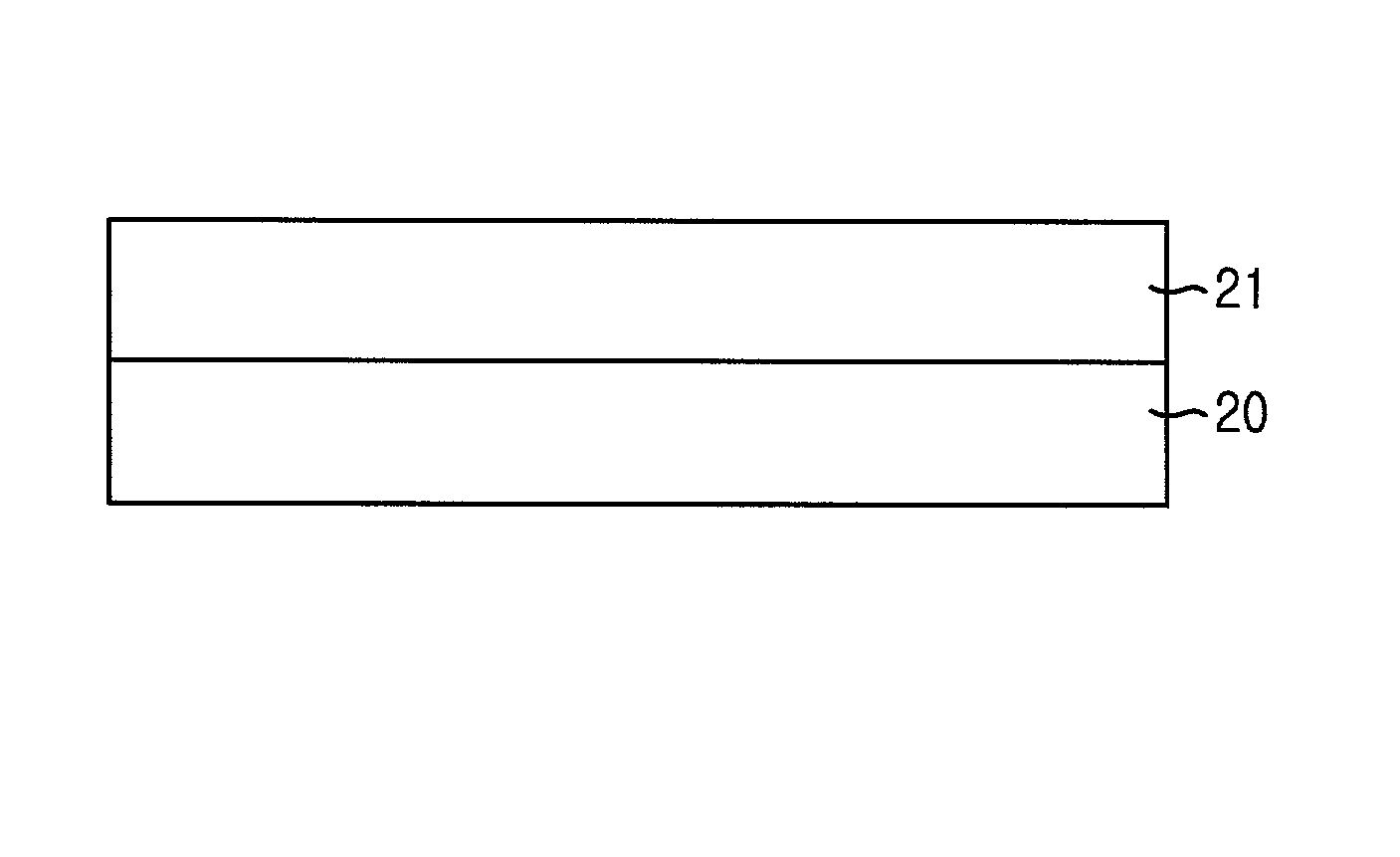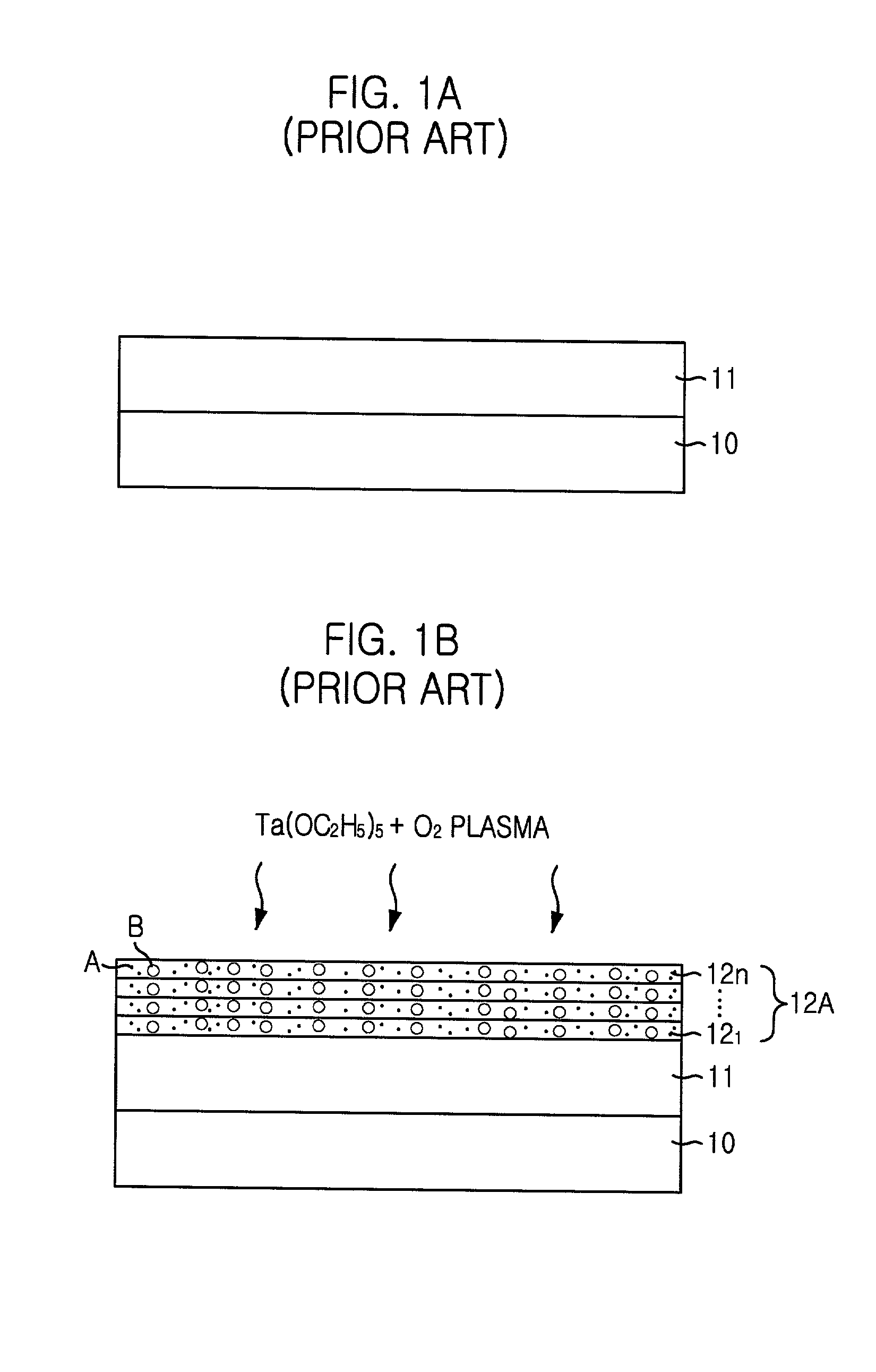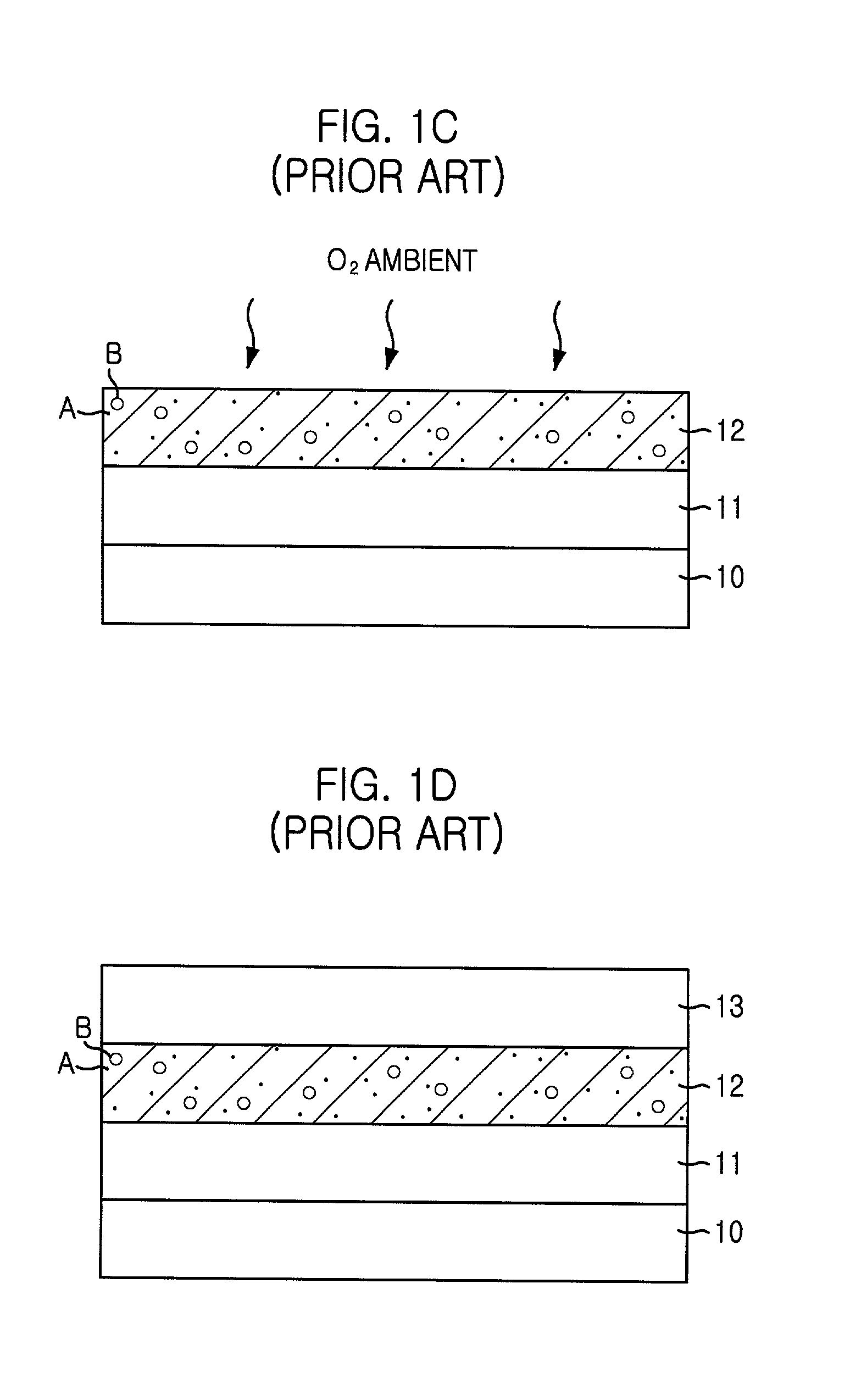Method for forming Ta2O5 dielectric layer using plasma enhanced atomic layer deposition
- Summary
- Abstract
- Description
- Claims
- Application Information
AI Technical Summary
Benefits of technology
Problems solved by technology
Method used
Image
Examples
Embodiment Construction
[0020] The disclosed processes will now be described in conjunction with the accompanying drawings, FIGS. 2A to 2E.
[0021] FIGS. 2A to 2E are cross-sectional views depicting a method for forming Ta.sub.2O.sub.5 dielectric layer in accordance with the disclosed process.
[0022] First, as illustrated in FIG. 2A, after a polysilicon layer 21 to form the bottom electrode is deposited on a substrate 20 formed with the substructure including transistors and plugs, the natural oxidation layer (now shown) on the surface of the polysilicon layer 21 is etched back with HF or BOE (Buffer Oxide Etchant), and then the surface of the polysilicon layer 21 is treated with the RTP (Rapid Thermal Process) in an ambient atmosphere of NH.sub.3.
[0023] Then, as illustrated in FIG. 2B, a Ta.sub.2O.sub.5 dielectric layer 22A is formed by flowing Ta(OC.sub.2H.sub.5).sub.5 source in the chamber and generating Ta and oxygen plasma.
[0024] The method for depositing a Ta.sub.2O.sub.5 dielectric layer 22A using the ...
PUM
| Property | Measurement | Unit |
|---|---|---|
| Time | aaaaa | aaaaa |
| Time | aaaaa | aaaaa |
| Pressure | aaaaa | aaaaa |
Abstract
Description
Claims
Application Information
 Login to View More
Login to View More - R&D
- Intellectual Property
- Life Sciences
- Materials
- Tech Scout
- Unparalleled Data Quality
- Higher Quality Content
- 60% Fewer Hallucinations
Browse by: Latest US Patents, China's latest patents, Technical Efficacy Thesaurus, Application Domain, Technology Topic, Popular Technical Reports.
© 2025 PatSnap. All rights reserved.Legal|Privacy policy|Modern Slavery Act Transparency Statement|Sitemap|About US| Contact US: help@patsnap.com



